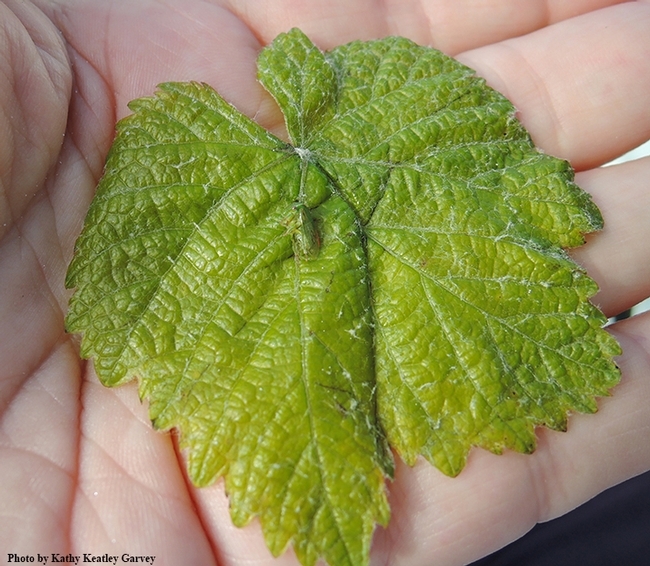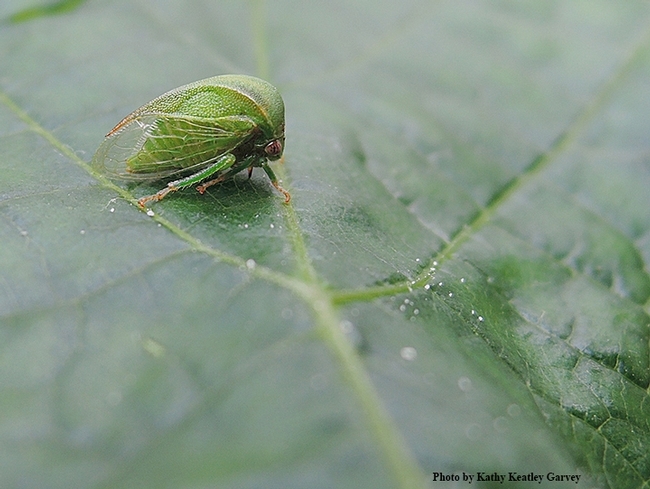
"It" is the three-cornered alfalfa hopper, Spissistilus festinus, a lear-winged, wedge-shaped (thus the name "three-cornered") insect that's about a quarter of an inch long. That's about the size of a pomegranate seed.
And the spotlight will shine on the hopper on Wednesday, Dec. 5 when Cindy Preto--who recently received her master's degree in entomology from the University of California, Davis, studying with major professor Frank Zalom--delivers a UC Davis Department of Entomology and Nematology seminar.
Preto's hourlong seminar, titled “Behavior and Biology of the Three-Cornered Alfalfa Hopper in Vineyards," begins at 4:10 p.m. in 122 Briggs Hall, located on Kleiber Hall Drive. Preto received her bachelor's degree in viticulture and enology, with an entomology minor in agricultural pest management, from UC Davis in 2014.
Zalom, a distinguished professor in the department, a former director of the UC Statewide Integrated Pest Management Program (UC IPM), and a past president of the 7000-member Entomological Society of America (ESA), will introduce her.
Back in October of 2016, UC Davis-based research on the three-cornered alfalfa hopper and the Grapevine Red Blotch Disease grabbed the headlines. It made the cover story of a special focus issue, "Disease Management in the Genomics Era," in the journal Phytopathology.
Zalom and research biologist Mysore "Sudhi" Sudarshana of the USDA's Agriculture Research Services (ARS), who is based in the UC Davis Department of Plant Pathology, led the research.
To recap:
In 2015, the Zalom team hypothesized that the three-cornered alfalfa hopper could transmit the Grapevine Red Blotch-associated virus, GRBaV, "based in part on phylogeneic analysis of coat protein sequences of 23 geminiviruses that revealed that GRBaV-CP was most similar to that of another geminivirus that was transmitted by another treehopper," explained Zalom, a distinguished professor of entomology with the UC Davis Department of Entomology and Nematology, and a past president of the Entomological Society of America
Their research, published in the journal, confirms that the alfalfa hopper “was able to both acquire the virus from a grapevine infested with GRBaV and transmit the virus to healthy grapevines in the laboratory.”
“In commercial vineyards, lateral shoots of grapevines girdled due to feed injury by the adult three-cornered alfalfa hopper also tested positive for the virus using digital PCR,” the scientists noted in their abstract. “These findings represent an important step in understanding the biology of GRBaV and develop management guidelines.”
The disease, first noticed in 2008 and attributed to a newly identified virus in 2012, is present in many major grape production regions of the United States and Canada. It can reduce fruit quality and ripening. (See this UC IPM document, written by Zalom and his colleagues.)
The scientific name, Spissistilus festinus, sounds a little festive--especially when mentioned during the holiday season.
Names can be deceiving.
Attached Images:

